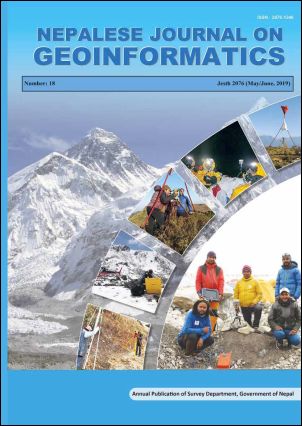Remote Sensing of Nepal’s Forests and Trees: Ascertaining the Front Line of Human-Induced Tree Cover Change
DOI:
https://doi.org/10.3126/njg.v18i1.51052Keywords:
Remote Sensing, Tree cover change, ForestAbstract
Synoptic, remote sensing of the national-scale, societal response of trees and forests to human driving forces in Nepal has been a wicked problem. This problem is a complex of four ancillary issues, namely, minimum mapping unit, radiometric scatter due to terrain, modeling of human dimensions, and democratizing robust environmental analysis. Beginning with the November 2018 conference convened by the East-West Center (EWC), USA, in Nepal, the state-of-the-art and key works in this problem-solving has been reviewed in this paper. Though this technology has improved the detection of forest and tree changes due to human driving forces at earlier stages, it is still not robust enough to inform global and national policy.




